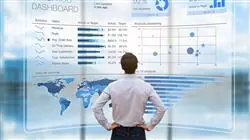University certificate
The world's largest school of business”
Why study at TECH?
Reach the top of your career and achieve success thanks to TECH! You will have access to 10 unique Masterclasses, designed by an internationally renowned Business Intelligence specialist"

Why Study at TECH?
TECH is the world's largest 100% online business school. It is an elite business school, with a model based on the highest academic standards. A world-class center for intensive managerial skills training.
TECH is a university at the forefront of technology, and puts all its resources at the student's disposal to help them achieve entrepreneurial success"
At TECH Global University
|
|
Innovation |
The university offers an online learning model that combines the latest educational technology with the most rigorous teaching methods. A unique method with the highest international recognition that will provide students with the keys to develop in a rapidly-evolving world, where innovation must be every entrepreneur’s focus.
"Microsoft Europe Success Story", for integrating the innovative, interactive multi-video system.
|
|
The Highest Standards |
Admissions criteria at TECH are not economic. Students don't need to make a large investment to study at this university. However, in order to obtain a qualification from TECH, the student's intelligence and ability will be tested to their limits. The institution's academic standards are exceptionally high...
95% of TECH students successfully complete their studies.
|
|
Networking |
Professionals from countries all over the world attend TECH, allowing students to establish a large network of contacts that may prove useful to them in the future.
100,000+ executives trained each year, 200+ different nationalities.
|
|
Empowerment |
Students will grow hand in hand with the best companies and highly regarded and influential professionals. TECH has developed strategic partnerships and a valuable network of contacts with major economic players in 7 continents.
500+ collaborative agreements with leading companies.
|
|
Talent |
This program is a unique initiative to allow students to showcase their talent in the business world. An opportunity that will allow them to voice their concerns and share their business vision.
After completing this program, TECH helps students show the world their talent.
|
|
Multicultural Context |
While studying at TECH, students will enjoy a unique experience in a program with a global vision. They will study in a multicultural context. through which they can learn about the operating methods in different parts of the world, and gather the latest information that best adapts to their business idea.
TECH's students represent more than 200 different nationalities.

|
|
Learn with the best |
In the classroom, TECH teaching staff discuss how they have achieved success in their companies, working in a real, lively, and dynamic context. Teachers who are fully committed to offering a quality specialization that will allow students to advance in their career and stand out in the business world.
TECH's teachers represent more than 20 different nationalities.
TECH strives for excellence and, to this end, boasts a series of characteristics that make this university unique:
|
|
Analysis |
TECH explores the student’s critical side, their ability to question things, their problem-solving skills, as well as their interpersonal skills.
|
|
Academic Excellence |
TECH offers students the best online learning methodology. The university combines the Relearning methodology (the most internationally recognized postgraduate learning methodology) with Harvard Business School case studies. A complex balance of traditional and state-of-the-art methods, within the most demanding academic framework.
|
|
Economy of Scale |
TECH is the world’s largest online university. It currently boasts a portfolio of more than 10,000 university postgraduate programs and in today's new economy, volume + technology = a ground-breaking price. This way, TECH ensures that studying is not as expensive for students as it would be at another university.
At TECH you will have access to Harvard Business School case studies"
Syllabus
The MBA in Business Intelligence Management is an exceptional program that challenges the professional by directing their attention to success in the business world and the quality of services and human capital. It is a program that has been structured in such a way that the student not only acquires all the knowledge and skills sought, but also presents a unique and stimulating experience that will take them to the top of their professional capacity.
You will learn how to base the management of emotions as a basic tool to influence the results of the company and your professional future"
Syllabus
The MBA in Business Intelligence Management at TECH Global University is an intensive program that prepares students to face challenges and business decisions in the field of technology and within data and information generation systems.
The content of the MBA in Business Intelligence Management is designed to promote control and strategic decision making in a successful business environment.
Over the course of 2,700 hours, the student analyzes a plethora of practical cases through individual and team work. It is, therefore, an authentic immersion in real business situations.
Therefore, this Professional master’s degree deals in depth with the concept of Business Intelligence from a disruptive, complete and up-to-date perspective, focused on solving the real needs of the business world. It is designed to train professionals who understand Business Intelligence with a strategic, international and innovative approach.
A plan fully designed for the student, focused on their professional improvement, preparing them to achieve excellence in the field of Business intelligence. A program that understands both the needs of the student and the company, through innovative content based on the latest trends, supported by the best educational methodology and an exceptional faculty.
This MBA takes place over 12 months and is divided into 15 modules:
Module 1. Enterprise Business Intelligence
Module 2. Business Perspective
Module 3. Data-Driven Business Transformation
Module 4. Data Visualization
Module 5. Programming for Data Analysis
Module 6. Digital Marketing Analytics
Module 7. Data Management
Module 8. Data Protection
Module 9. Business Intelligence and Artificial Intelligence: Strategies and Applications
Module 10. Optimization of the Company's Human Capital
Module 11. Leadership, Ethics and Social Responsibility in Companies
Module 12. People and Talent Management
Module 13. Economic and Financial Management
Module 14. Commercial Management and Strategic Marketing
Module 15. Executive Management

Where, When and How is it Taught?
TECH offers the possibility of taking this program completely online. Over the course of the 12 months, the student will be able to access all the contents of this program at any time, allowing them to self-manage their study time.
Module 1. Business Intelligence in the Company
1.1. Corporate Business Intelligence
1.1.1. The World of Data
1.1.2. Relevant Concepts.
1.1.3. Main Characteristics
1.1.4. Solutions in Today's Market
1.1.5. Overall Architecture of a BI Solution
1.1.6. Cybersecurity in BI and Data Science
1.2. New Business Concept
1.2.1. Why BI
1.2.2. Obtaining Information
1.2.3. BI in the Different Departments of the Company
1.2.4. Reasons to Invest in BI
1.3. Data Warehouse
1.3.1. Definition and Objectives Data Warehouse and Data Mart
1.3.2. Architecture
1.3.3. Dimensional Modeling and its Types of Diagrams
1.3.4. Extraction, Transformation and Loading Process (ETL)
1.3.5. Metadata
1.4. Big Data and Data Capture
1.4.1. Capture
1.4.2. Transformation
1.4.3. Storage
1.5. Reporting Business Intelligence (BI)
1.5.1. Database Structures
1.5.2. OLTP and OLAP Databases
1.5.3. Examples
1.6. Dashboards or Balanced Scorecards
1.6.1. Control Panels
1.6.2. Decision Support Systems
1.6.3. Executive Information Systems
1.7. Deep Learning
1.7.1. Deep Learning
1.7.2. Deep Learning Applications
1.8. Machine Learning
1.8.1. Machine Learning
1.8.2. Machine Learning Utilities
1.8.3. Deep Learning vs. Machine Learning
1.9. BI Tools and Solutions
1.9.1. Choosing the Best Tool
1.9.2. Microsoft Power BI, MicroStrategy y Tableau
1.9.3. SAP BI, SAS BI and Qlikview
1.9.4. Prometheus
1.10. BI Project Planning and Management
1.10.1. First Steps to Define a BI Project
1.10.2. BI Solution for the Company
1.10.3. Requirements and Objectives
Module 2. Business Perspective
2.1. The Company
2.1.1. Venture Capital Theory
2.1.2. Organizational Morphology: Size, Shape, Activity and Sectors
2.1.3. Organization and Resources
2.1.4. Management and Their Needs
2.2. The Company: Market and Customer
2.2.1. Market and Customer
2.2.2. Market Analysis and Segmentation
2.2.2.1. Direct and Indirect Competition
2.2.2.2. Competitive Advantage
2.3. SWOT Analysis
2.3.1. Business Strategy
2.3.2. DAFO Analysis
2.3.3. Objectives and Deadlines (SMART, C/M/L/P, Cascading).
2.3.4. Measuring Results: Knowing the Reality
2.3.5. Key Performance Indicators (KPI)
2.4. Information as an Asset
2.4.1. Information and Management
2.4.2. Life Cycle Information
2.4.3. Operational System and Strategic System
2.5. Integral Control Panel
2.5.1. Control Panels: Operational, Tactical and Strategic
2.5.2. CMI Definition
2.5.3. Financial Perspective
2.5.4. Customer Perspective
2.5.5. Internal Processes Perspective
2.5.6. Learning and Growth Perspective
2.6. Productivity Analysis
2.6.1. Income, Expenditures, Investment and Consumption
2.6.2. Cost Analysis and Allocation
2.6.3. ROI and Others Ratios of Interest
2.7. Distribution and Sales
2.7.1. Relevance of the Department
2.7.2. Channels and Equipment
2.7.3. Types of Sales and Consumption
2.8. Other Common Areas
2.8.1. Production and Service Delivery
2.8.2. Distribution and Logistics
2.8.3. Commercial Communication
2.8.4. Inbound Marketing
2.9. Data Management
2.9.1. Roles and Responsibilities (Managerial Roles and Technical Roles)
2.9.2.Stakeholder Identification
2.9.3. Information Management Systems (Intro and Types, without Technology Details)
2.9.4. Type of Operating Systems
2.9.5. Strategic or Decision Support Systems
2.9.6. Platforms for Information: Cloud Computing vs On Premise
2.10. Exploring the Information:
2.10.1. Intro SQL: Relational Databases Basic Concepts (DDL and DML, PK, FK, JOINS)
2.10.2. Networks and Communications: Public/Private Networks, Network/Subnet/Router Address and DNS. VPN Tunnel and SSH
2.10.3. Operating System: Standardized Data Models.
2.10.4. Strategic System: Multidimensional Modeling, OLAP and Graphic Dashboards
2.10.5. Strategic Analysis of BB.DD. and Report Composition
Module 3. Data-Driven Business Transformation
3.1. Big Data
3.1.1. Big Data in Companies
3.1.2. Concept of Value
3.1.3. Value Project Management
3.2. Customer Journey
3.2.1. Customer Life Cycle
3.2.2. Association of Campaigns to the Life Cycle
3.2.3. Campaign Metrics
3.3. Data Management for Campaigns
3.3.1. Datawarehouse and Datalab
3.3.2. Campaign Creation Tools
3.3.3. Drive Methods
3.4. Digital Marketing GDPR
3.4.1. Data Anonymization and Manipulation of Personal Data
3.4.2. Robinson Concept
3.4.3. Exclusion Lists
3.5. Control Panels
3.5.1. KPIs
3.5.2. Audience
3.5.3. Tools
3.5.4. Storytelling
3.6. Customer Analysis and Characterization
3.6.1. 360º Customer Vision
3.6.2. Relation of Analysis to Tactical Actions
3.6.3. Analysis Tools
3.7. Business Examples Applying Big Data Techniques
3.7.1. Upselling/Cross-Selling
3.7.2. Propensity Models
3.7.3. Risk Models
3.7.4. Predictions
3.7.5. Image Processing
Module 4. Data Visualization
4.1. Data Visualization
4.1.1. Data visualization
4.1.2. Importance of Data Analysis and Visualization
4.1.3. Evolution
4.2. The Design
4.2.1. Use of Color
4.2.2. Composition and Typography
4.2.3. Recommendations
4.3. Types of Data
4.3.1. Qualitative
4.3.2. Quantitative
4.3.3. Temporary Data
4.4. Data Sets
4.4.1. Files
4.4.2. Databases
4.4.3. Open Data
4.4.4. Streaming Data
4.5. Common Types of Representation
4.5.1. Columns
4.5.2. Bars
4.5.3. Lines
4.5.4. Areas
4.5.5. Dispersion
4.6. Advanced Types of Representation
4.6.1. Circulars
4.6.2. Rings
4.6.3. Bubbles
4.6.4. Maps
4.7. Application by Area
4.7.1. Political Science and Sociology
4.7.2. Science
4.7.3. Marketing
4.7.4. Health and Well-being
4.7.5. Meteorology
4.7.6. Business and Finance
4.8. Storytelling
4.8.1. Importance of Storytelling
4.8.2. History of Storytelling
4.8.3. Application of Storytelling
4.9. Visualization Software
4.9.1. Commercials
4.9.2. Free
4.9.3. Online
4.9.4. Free Software
4.10. The Future of Data Visualization
4.10.1. Virtual Reality
4.10.2. Augmented Reality
4.10.3. Artificial Intelligence
Module 5. Programming for Data Analysis
5.1. Programming for Data Analysis
5.1.1. Language for Data Analysis
5.1.2. Evolution and Characteristics of the Main Tools
5.1.3. Installation and Configuration
5.2. Types of Data
5.2.1. Basic Types
5.2.2. Complex Types
5.2.3. Other Structures
5.3. Structures and Operations
5.3.1. Data Operations
5.3.2. Control Structures
5.3.3. File Operations
5.4. Data Extraction and Analysis
5.4.1. Statistical Summaries
5.4.2. Univariate Analysis
5.4.3. Multivariate Analysis
5.5. Visualization
5.5.1. Univariate Graphs
5.5.2. Multivariable Graphs
5.5.3. Other Charts of Interest
5.6. Pre-processing
5.6.1. The Importance of Data Quality
5.6.2. Outlier Detection and Analysis
5.6.3. Other Dataset Quality Factors
5.7. Advanced Pre-processing
5.7.1. Subsampling
5.7.2. Resampling
5.7.3. Dimensionality Reduction
5.8. Data Modeling
5.8.1. Modeling Phases
5.8.2. Division of the Data Set
5.8.3. Metrics for Prediction
5.9. Advanced Data Modeling
5.9.1. Unsupervised Models
5.9.2. Supervised Models
5.9.3. Libraries for Modeling
5.10. Tools and Good Practices
5.10.1. Best Practices for Modeling
5.10.2. The Tools of a Data Analyst
5.10.3. Conclusion and Bookstores of Interest
Module 6. Digital Marketing Analytics
6.1. Web Analytics
6.1.1. Web Analytics Use
6.1.2. History
6.1.3. Applicable Methodology
6.2. Google Analytics
6.2.1. About Google Analytics
6.2.2. Metrics vs. Dimensions
6.2.3. Measurement Objectives
6.3. Conversion Metrics
6.3.1. Basic Metrics
6.3.2. Advanced Metrics or KPIs (Key Performance Indicators)
6.3.3. Conversions
6.4. Dimensions
6.4.1. Campaign/Keyword
6.4.2. Source/Media
6.4.3. Content
6.5. Universal Analytics vs. Google Analytics 4
6.5.1. Differences UA vs. GA4
6.5.2. Advantages and Limitations
6.5.3. Use of UA and GA4 Tools
6.6. Setting up Google Analytics
6.6.1. Installation and Integration
6.6.2. Universal Analytics Structure: Accounts, Properties and Views
6.6.3. Conversion Goals and Funnels
6.7. Reports
6.7.1. Real-Time Analytics
6.7.2. Audience Analytics
6.7.3. Purchase Analytics
6.7.4. Behavior Analytics
6.7.5. Conversion Analytics
6.8. Advanced Reports
6.8.1. Panels
6.8.2. Personalized Reports
6.8.3. APIs
6.9. Segments
6.9.1. Difference between Segment and Filter
6.9.2. Types of Segments: Predefined/Customized
6.9.3. Remarketing
6.10. Digital Analytics
6.10.1. Measurement
6.10.2. Implementation
6.10.3. Conclusions
Module 7. Data Management
7.1. Statistics
7.1.1. Statistics: Descriptive Statistics, Statistical Inferences
7.1.2. Population, Sample, Individual
7.1.3. Variables: Definition, Measurement Scales
7.2. Types of Data Statistics
7.2.1. According to Type
7.2.1.1. Quantitative: Continuous Data and Discrete Data
7.2.1.2. Qualitative: Binomial Data, Nominal Data and Ordinal Data
7.2.2. According to Its Form: Numerical, Text, Logical
7.2.3. According to Their Source: Primary, Secondary
7.3. Data Management Planning
7.3.1. Definition of Objectives
7.3.2. Determination of Available Resources
7.3.3. Establishment of Time Lapses
7.3.4. Data Structure
7.4. Data Collection
7.4.1. Methodology of Data Collection
7.4.2. Data Collection Tools
7.4.3. Data Collection Channels
7.5. Data Cleaning
7.5.1. Phases of Data Cleansing
7.5.2. Data Quality
7.5.3. Data Manipulation (with R)
7.6. Data Analysis, Interpretation and Evaluation of Results
7.6.1. Statistical Measures
7.6.2. Relationship Indexes
7.6.3. Data Mining
7.7. Data Visualization
7.7.1. Suitable Display According to Data Type
7.7.2. End-User Considerations
7.7.3. Executive Models of Results Presentation
7.8. Data Warehouse
7.8.1. Elements that Comprise it
7.8.2. Design
7.8.3. Aspects to Consider
7.9. Data Availability
7.9.1. Access
7.9.2. Uses
7.9.3. Security/Safety
7.10. Practical Applications
7.10.1. Data Exploration
7.10.2. Manipulation and Adjustment of Patterns and Structures
7.10.3. Test Application and Modeling
Module 8. Data Protection
8.1. Data Protection Regulations
8.1.1. Regulatory Framework
8.1.2. Definitions
8.1.3. Subjects Obliged to Comply with the Regulations
8.1.3.1. Differences between Controllers, Joint Controllers and Processors
8.1.4. Data Protection Officer
8.2. Harmonized Regulation of Artificial Intelligence: Proposal for a European Regulation
8.2.1. Prohibited Practices
8.2.2. High-Risk Artificial Intelligence Systems
8.2.3. Innovation Support Measures
8.3. Principles Relating to the Processing of Personal Data
8.3.1. Fairness, Loyalty and Transparency
8.3.2. Purpose Limitation
8.3.3. Data Minimization, Accuracy and Limitation of Retention Period
8.3.4. Integrity and Confidentiality
8.3.5. Proactive Responsibility
8.4. Basis of Lawfulness or Legitimacy and Authorizations for the Processing, Including, if Applicable, the Communication of the Data
8.4.1. Consent
8.4.2. Contractual Relationship or Pre-Contractual Measures
8.4.3. Fulfillment of a Legal Obligation
8.4.4. Protection of Vital Interests of the Data Subject or Another Person
8.4.5. Public Interest or Exercise of Public Powers
8.4.6. Legitimate Interest: Weighing of interests
8.5. Individuals Rights
8.5.1. Transparency and Information
8.5.2. Access
8.5.3. Rectification and Deletion (Right to be Forgotten), Limitation and Portability
8.5.4. Opposition and Automated Individual Decisions
8.5.5. Limits to Rights
8.6. Data Protection by Design: Analysis and Management of Personal Data Processing Risks
8.6.1. Identification of Risks and Threats to the Rights and Freedoms of Individuals
8.6.2. Risk Assessment
8.6.3. Risk Management Plan
8.7. Techniques for Ensuring Compliance with Data Protection Regulations
8.7.1. Identification of Proactive Accountability Measures
8.7.2. Organizational Measures
8.7.3. Technical Measures
8.7.4. The Register of Processing Activities
8.7.5. Security Breach Management
8.7.6. Codes of Conduct and Certifications
8.8. The Data Protection Impact Assessment (DPA or DPIA)
8.8.1. EIPD Needs Assessment
8.8.2. Evaluation Methodology
8.8.3. Identification of Risks and Threats
8.8.4. Prior Consultation with the Supervisory Authority
8.9. Contractual Regulation between Those Responsible, Those in charge and, Where Applicable, Other Subjects. International Data Transfers
8.9.1. Data Access or Data Processing Contract
8.9.2. Contracts between Co-Responsible Parties
8.9.3. Responsibilities of the Parties
8.9.4. Definition and Safeguards to be Adopted in International Transfers
8.10. Control Authorities. Violations and Penalties
8.10.1. Violations
8.10.2. Fines
8.10.3. Penalty Procedure
8.10.4. Control Authorities and Cooperation Mechanisms
Module 9. Strategies and Applications
9.1. Financial Services
9.1.1. The Implications of Artificial Intelligence (AI) in Financial Services. Opportunities and Challenges
9.1.2. Case Uses
9.1.3. Potential Risks Related to the Use of AI
9.1.4. Potential Future Developments/Uses of AI
9.2. Implications of Artificial Intelligence in the Healthcare Service
9.2.1.Implications of AI in the Healthcare Sector. Opportunities and Challenges
9.2.2. Case Uses
9.3. Risks Related to the Use of AI in the Health Service
9.3.1. Potential Risks Related to the Use of AI
9.3.2. Potential Future Developments/Uses of AI
9.4. Retail
9.4.1. Implications of AI in Retail. Opportunities and Challenges
9.4.2. Case Uses
9.4.3. Potential Risks Related to the Use of AI
9.4.4. Potential Future Developments/Uses of AI
9.5. Industry 4.0
9.5.1. Implications of AI in the 4.0 Industry. Opportunities and Challenges
9.5.2. Case Uses
9.6. Potential Risks Related to the use of AI in the 4.0 Industry
9.6.1. Case Uses
9.6.2. Potential Risks Related to the Use of AI
9.6.3. Potential Future Developments/Uses of AI
9.7. Public Administration.
9.7.1. Implications of AI in Public Administration: Opportunities and Challenges
9.7.2. Case Uses
9.7.3. Potential Risks Related to the Use of AI
9.7.4. Potential Future Developments/Uses of AI
9.8. Education
9.8.1. Implications of AI in Educational: Opportunities and Challenges
9.8.2. Case Uses
9.8.3. Potential Risks Related to the Use of AI
9.8.4. Potential Future Developments/Uses of AI
9.9. Forestry and Agriculture
9.9.1. Implications of AI in Forestry and Agriculture. Opportunities and Challenges
9.9.2. Case Uses
9.9.3. Potential Risks Related to the Use of AI
9.9.4. Potential Future Developments/Uses of AI
9.10. Human Resources
9.10.1. Implications of AI for Human Resources Opportunities and Challenges
9.10.2. Case Uses
9.10.3. Potential Risks Related to the Use of AI
9.10.4. Potential Future Developments/Uses of AI
Module 10. Optimization of the Company's Human Capital
10.1. Human Capital in the Company
10.1.1. Value of Human Capital in the Technological World
10.1.2. Managerial Skills
10.1.3. Paradigm Shift in Management Models
10.2. Manager's Skills
10.2.1. Management Process
10.2.2. Management Functions
10.2.3. Group Leadership Management in Companies: Group Relations
10.3. Communication in the Company
10.3.1. The Company's Communication Process
10.3.2. Interpersonal Relations in the Company
10.3.3. Communication Techniques for Change
10.3.3.1. Storytelling
10.3.3.2. Assertive Communication Techniques. Feedback, Consensus
10.4. Business Coaching
10.4.1. Business Coaching
10.4.2. The Practice of Coaching
10.4.3. Types of Coaching and Coaching in Organizations
10.4.3.1. Coaching as a Leadership Style
10.5. Business Mentoring
10.5.1. Mentoring in the Company
10.5.2. The 4 Processes of a Mentoring Program
10.5.3. Benefits of this Business Tool
10.6. Mediation and Conflict Resolution in the Company
10.6.1. The Conflicts
10.6.2. Preventing, Addressing and Resolving Conflict
10.6.3. Stress and Work Motivation
10.7. Negotiation Techniques
10.7.1. Negotiation at the Managerial Level in Technology Companies
10.7.2. Strategies and Main Types of Negotiation
10.7.3. The Figure of the Negotiator
10.8. Enterprise Change Management
10.8.1. Factors of Organizational Change
10.8.2. Strategic Planning
10.8.3. Organizational Change Management
10.8.3.1. For Intangible Change: Teams, Communication, Culture, Leadership
10.8.3.2. For basic or Tangible Change: Goal Setting, Performance Measurement, Learning, Recognition and Rewards
10.9. Techniques for Improving Equipment Performance
10.9.1. Teamwork Techniques
10.9.2. Delegating in Work Teams
10.10. Group Dynamics. Classification
10.10.1. The Role of the Dynamizer
10.10.2. Group Dynamics Techniques
10.10.2.1. Brainstorming+
10.10.2.2. Philps 6/6
10.10.2.3. Hot Air Balloon D
Module 11. Leadership, Ethics and Social Responsibility in Companies
11.1. Globalization and Governance
11.1.1. Governance and Corporate Governance
11.1.2. The Fundamentals of Corporate Governance in Companies
11.1.3. The Role of the Board of Directors in the Corporate Governance Framework
11.2. Leadership
11.2.1. Leadership. A Conceptual Approach
11.2.2. Leadership in Companies
11.2.3. The Importance of Leaders in Business Management
11.3. Cross-Cultural Management
11.3.1. Concept of Cross-Cultural Management
11.3.2. Contributions to the Knowledge of National Cultures
11.3.3. Diversity Management
11.4. Management and Leadership Development
11.4.1. Concept of Management Development
11.4.2. Concept of Leadership
11.4.3. Leadership Theories
11.4.4. Leadership Styles
11.4.5. Intelligence in Leadership
11.4.6. The Challenges of Today's Leader
11.5. Business Ethics
11.5.1. Ethics and Morality
11.5.2. Business Ethics
11.5.3. Leadership and Ethics in Companies
11.6. Sustainability
11.6.1. Sustainability and Sustainable Development
11.6.2. The 2030 Agenda
11.6.3. Sustainable Companies
11.7. Corporate Social Responsibility
11.7.1. International Dimensions of Corporate Social Responsibility
11.7.2. Implementing Corporate Social Responsibility
11.7.3. The Impact and Measurement of Corporate Social Responsibility
11.8. Responsible Management Systems and Tools
11.8.1. CSR: Corporate Social Responsibility
11.8.2. Essential Aspects for Implementing a Responsible Management Strategy
11.8.3. Steps for the Implementation of a Corporate Social Responsibility Management System
11.8.4. Tools and Standards of CSR
11.9. Multinationals and Human Rights
11.9.1. Globalization, Multinational Corporations and Human Rights
11.9.2. Multinational Corporations and International Law
11.9.3. Legal Instruments for Multinationals in the Field of Human Rights
11.10. Legal Environment and Corporate Governance
11.10.1. International Rules on Importation and Exportation
11.10.2. Intellectual and Industrial Property
11.10.3. International Labor Law
Module 12. People and Talent Management
12.1. Strategic People Management
12.1.1. Strategic Human Resources Management
12.1.2. Strategic People Management
12.2. Human Resources Management by Competencies
12.2.1. Analysis of the Potential
12.2.2. Remuneration Policy
12.2.3. Career/Succession Planning
12.3. Performance Evaluation and Compliance Management
12.3.1. Performance Management
12.3.2. Performance Management: Objectives and Process
12.4. Innovation in Talent and People Management
12.4.1. Strategic Talent Management Models
12.4.2. Identification, Training and Development of Talent
12.4.3. Loyalty and Retention
12.4.4. Proactivity and Innovation
12.5. Motivation
12.5.1. The Nature of Motivation
12.5.2. Expectations Theory
12.5.3. Needs Theory
12.5.4. Motivation and Financial Compensation
12.6. Developing High Performance Teams
12.6.1. High-Performance Teams: Self-Managing Teams
12.6.2. Methodologies for Managing High Performance Self-Managed Teams
12.7. Productivity, Attraction, Retention and Activation of Talent
12.7.1. Productivity
12.7.2. Talent Attraction and Retention Levers
Module 13. Economic and Financial Management
13.1. Economic Environment
13.1.1. Macroeconomic Environment and the National Financial System
13.1.2. Financial Institutions
13.1.3. Financial Markets
13.1.4. Financial Assets
13.1.5. Other Financial Sector Entities
13.2. Executive Accounting
13.2.1. Basic Concepts
13.2.2. The Company's Assets
13.2.3. The Company's Liabilities
13.2.4. The Company's Net Worth
13.2.5. The Income Statement
13.3. Information Systems and Business Intelligence
13.3.1. Fundamentals and Classification
13.3.2. Cost Allocation Phases and Methods
13.3.3. Choice of Cost Center and Impact
13.4. Budget and Management Control
13.4.1. The Budgetary Model
13.4.2. The Capital Budget
13.4.3. The Operating Budget
13.4.5. The Cash Budget
13.4.6. Budget Monitoring
13.5. Financial Management
13.5.1. The Company's Financial Decisions
13.5.2. The Financial Department
13.5.3. Cash Surpluses
13.5.4. Risks Associated with Financial Management
13.5.5. Risk Management of the Financial Management
13.6. Financial Planning
13.6.1. Definition of Financial Planning
13.6.2. Actions to Be Taken in Financial Planning
13.6.3. Creation and Establishment of the Business Strategy
13.6.4. The Cash Flow Chart
13.6.5. The Working Capital Chart
13.7. Corporate Financial Strategy
13.7.1. Corporate Strategy and Sources of Financing
13.7.2. Corporate Financing Financial Products
13.8. Strategic Financing
13.8.1. Self-financing
13.8.2. Increase in Shareholder's Equity
13.8.3. Hybrid Resources
13.8.4. Financing through Intermediaries
13.9. Financial Analysis and Planning
13.9.1. Analysis of the Balance Sheet
13.9.2. Analysis of the Income Statement
13.9.3. Profitability Analysis
13.10. Analyzing and Solving Cases/Problems
13.10.1. Financial Information on Industria de Diseño y Textil, S.A. (INDITEX)
Module 14. Commercial Management and Strategic Marketing
14.1. Commercial Management
14.1.1. Conceptual Framework of Commercial Management
14.1.2. Commercial Strategy and Planning
14.1.3. The Role of Sales Managers
14.2. Marketing
14.2.1. The Concept of Marketing
14.2.2. The Basic Elements of Marketing
14.2.3. Marketing Activities in Companies
14.3. Strategic Marketing Management
14.3.1. The Concept of Strategic Marketing
14.3.2. Concept of Strategic Marketing Planning
14.3.3. Stages in the Process of Strategic Marketing Planning
14.4. Digital Marketing and e-Commerce
14.4.1. Objectives of Digital Marketing and e-Commerce
14.4.2. Digital Marketing and the Media It Uses
14.4.3. E-Commerce. General Context
14.4.4. Categories of e-Commerce
14.4.5. Advantages and Disadvantages of e-Commerce Compared to Traditional Commerce
14.5. Digital Marketing to Reinforce a Brand
14.5.1. Online Strategies to Improve Brand Reputation
14.5.2. Branded Content and Storytelling
14.6. Digital Marketing to Attract and Retain Customers
14.6.1. Loyalty and Engagement Strategies Using the Internet
14.6.2. Visitor Relationship Management
14.6.3. Hypersegmentation
14.7. Digital Campaign Management
14.7.1. What Is a Digital Advertising Campaign?
14.7.2. Steps to Launch an Online Marketing Campaign
14.7.3. Mistakes in Digital Advertising Campaigns
14.8. Sales Strategy
14.8.1. Sales Strategy
14.8.2. Sales Methods
14.9. Corporate Communication
14.9.1. Concept
14.9.2. The Importance of Communication in the Organization
14.9.3. Type of Communication in the Organization
14.9.4. Functions of Communication in the Organization
14.9.5. Elements of Communication
14.9.6. Problems of Communication
14.9.7. Communication Scenarios
14.10. Digital Communication and Reputation
14.10.1. Online Reputation
14.10.2. How to Measure Digital Reputation?
14.10.3. Online Reputation Tools
14.10.4. Online Reputation Report
14.10.5. Online Branding
Module 15. Executive Management
15.1. General Management
15.1.1. The Concept of General Management
15.1.2. The Role of the CEO
15.1.3. The CEO and their Responsibilities
15.1.4. Transforming the Work of Management
15.2. Operations Management
15.2.1. The Importance of Management
15.2.2. Value Chain
15.2.3. Quality Management
15.3. Public Speaking and Spokesperson Education
15.3.1. Interpersonal Communication
15.3.2. Communication Skills and Influence
15.3.3. Communication Barriers
15.4. Personal and Organizational Communication Tools
15.4.1. Interpersonal Communication
15.4.2. Interpersonal Communication Tools
15.4.3. Communication in the Organization
15.4.4. Tools in the Organization
15.5. Communication in Crisis Situations
15.5.1. Crisis
15.5.2. Phases of the Crisis
15.5.3. Messages: Contents and Moments
15.6. Preparation of a Crisis Plan
15.6.1. Analysis of Possible Problems
15.6.2. Planning
15.6.3. Adequacy of Personnel
15.7. Emotional Intelligence
15.7.1. Emotional Intelligence and Communication
15.7.2. Assertiveness, Empathy, and Active Listening
15.7.3. Self- Esteem and Emotional Communication
15.8. Personal Branding
15.8.1. Strategies for Personal Brand Development
15.8.2. Personal Branding Laws
15.8.3. Tools for Creating Personal Brands
15.9. Leadership and Team Management
15.9.1. Leadership and Leadership Styles
15.9.2. Leadership Skills and Challenges
15.9.3. Managing Change Processes
15.9.4. Managing Multicultural Teams

The teaching materials of this program, elaborated by these specialists, have contents that are completely applicable to your professional experiences"
Professional Master's Degree MBA in Business Intelligence Management
Today's business world demands innovative skills that meet the needs of the market and allow the company to be at the forefront of technological, social, cultural and economic advances that represent the current fluctuating industrial environment. At TECH Global University we understand perfectly the lack of high quality programs, therefore, from the largest Business School in the world we have designed the most complete Professional Master's Degree in Business Intelligence Management in the educational market. Our program consists of 1,500 academic hours, throughout which students will create an optimal conceptual background that will allow them to develop a sophisticated vision on the direction, management and decision making within a company. Likewise, students will learn to exploit the organization's information, carrying out marketing processes, data management and actions that will allow them to achieve the proposed objectives.
100% online postgraduate course
The postgraduate program in Business Intelligence Management has updated thematic axes, through which students will have access to high quality content related to business perspective, data protection, programming for analysis, optimization of human capital, as well as other topics necessary to consolidate as a multidisciplinary professional. Additionally, our program has a state-of-the-art multimedia teaching system that will allow students to prepare themselves for the challenges they will face in their daily work practice, since throughout the course they will face simulated situations based on real life.

















